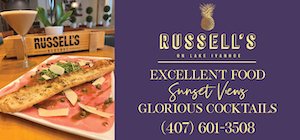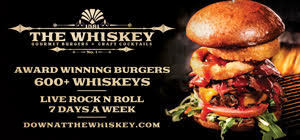I have a distinct memory of the night I went on a tapeo, or tapas bar crawl, in Madrid. It was the evening of September 11, 2001. There are certain events that provoke a “where were you when” remembrance. That is certainly one for me.
So when, several years later, I visited Ceviche in downtown Orlando, I was impressed with how the food and overall feel of the place whisked me back to Spain.
I like just about everything about Ceviche. The food and the atmosphere are authentic, and the staff seem genuinely enthusiastic about the tapas they serve. Of course, it’s a lot easier to be enthusiastic about the food when it’s this good.
The Orlando Ceviche is a new location for a Tampa restaurant that opened in 1997. There is another location in St. Petersburg and a newer location in Sarasota. It took over the space that of late was occupied by the ill-fated Pearl Steakhouse but which is more recognizable to longtime locals as the former Lili Marlene’s at Church Street Station.
The restaurant is an expansive space with wide-plank pine flooring and the sort of hand-painted tiles that adorn walls all over Spain.
The name is probably the least authentic Spanish thing about the place, ceviche being more popular as a Latin American dish. That said, the ceviche de la casa ($8), one of about half a dozen choices, was a delicious selection of citrus marinated seafood, including big scallops, tender-firm shrimp, squid and two-bite-sized pieces of salmon mixed with fresh tomatoes, scallions, bell peppers and a touch of cilantro.
But the pinchos selection of sardines ($6), big, fat fillets served with tomatoes and onions of a sliver of bread, were a more authentic taste of Spanish tapas, and every bit as tasty.
No tapas crawl is complete without a tortilla Espanola ($4), the potato and onion omelet that is as close to a national dish as you’ll find. Ceviche’s was perfectly executed so that the omelet, served in a small square portion, was sufficiently firm.
By the way, most items on the menu are available as tapas plates, that is, as small bites, or as larger portions. Whenever given the choice I ordered the smaller plates, and those are the prices I quote here. But all the prices are more than fair, and a veritable feast for four people can be had here for about $100.
Include a portion of oxtail ($11) in your budget. The rabo de toro was braised in red wine so that the meat was as tender as it could be and was falling off the bone, or off the tail, as the case may be. The cross-sections were served on a bed of cubed potatoes.
I also liked the braised baby lamb ribs ($9), but mostly because of the white beans mixed with chunks of chorizo that accompanied the flavorful lamb.
My guests and I all agreed that one of the best dishes we sampled was the berenjenas fritas ($6), thin slices of eggplant fried crispy like potato chips. Simple and delicious.
Croquetas de bacalao ($7), deep-fried fritters of salt cod blended with bechamel, were appropriately salty. Albondigas ($6) were dense balls of meat fashioned out of ground veal, chorizo and pork served in a spicy tomato sauce.
Desserts were less wonderful than all that preceded them. Pudin de pan ($7) was a too-dense bread pudding, and torta Valenciana ($8.50) was a chocolate cake with hints of orange that probably would have been better a day or two earlier. Flan ($5) was surprisingly bland.
The centerpiece of the dining room is a cold tapas station where cheeses and meats are sliced. Full shanks of hams hang on the four sides, small paper cups inserted at the feet to catch the dripping juices.
On many nights, in the bar space just outside the main dining area, which has its own bar, there is flamenco-style music that is mezmerizingly entertaining.
If Ceviche is the kind of restaurant we want to see more of in downtown Orlando – and I think it is – we should do everything we can to encourage its survival.
Ceviche is at 125 W. Church St., Orlando. It’s open for lunch and dinner Tuesday through Saturday. The phone number is 321-281-8140.









